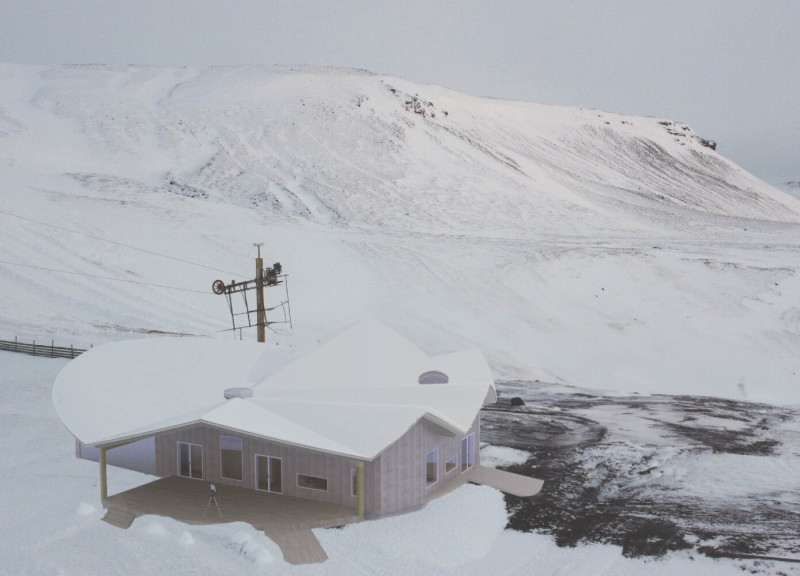5 key facts about this project
At its core, the project has been developed to serve multiple functions, addressing the needs of the users while adhering to principles of sustainability and efficiency. The design seamlessly accommodates a variety of activities, ensuring versatility and adaptability within its spaces. The layout promotes collaboration and interaction, showcasing an understanding of contemporary social dynamics. Large, open spaces encourage communal activities, while discrete areas provide privacy for individual tasks, reflecting an intelligent balance that enhances the user experience.
Attention to detail is prominent throughout the project within both the exterior and interior elements. The façade, constructed primarily from reinforced concrete, exhibits a sleek profile that effortlessly integrates with the surrounding landscape. Large expanses of low-emissivity glass are employed intermittently, allowing natural light to penetrate deep into the interiors while minimizing thermal loss. This choice is indicative of a thoughtful approach to energy efficiency, as it reduces reliance on artificial lighting and creates a welcoming environment.
The incorporation of sustainable timber adds warmth and texture to the design. This material choice not only serves an aesthetic purpose but also speaks to the project’s commitment to utilizing locally sourced and environmentally conscious materials. This selection reflects a key design philosophy, enhancing the building's connection to the local context. In addition to wood, galvanized steel is utilized for structural support, ensuring the integrity of the building while maintaining a streamlined appearance.
Landscaping around the project has been carefully curated to enhance its functionality and visual appeal, using native plants that require minimal maintenance and irrigation. Such choices amplify the connection between the building and its site, reinforcing ecological principles while providing a serene refuge amidst urban density. This integration of nature into the architectural framework adds another layer of complexity to the overall design, thereby enriching the occupants’ experience and fostering a sense of community.
Leapfrogging conventional architectural ideas, the design incorporates innovative spatial configurations that challenge typical layouts. The flow between indoor and outdoor spaces is well considered, facilitating natural ventilation and creating inviting transitions. Terraces that overlook communal gardens serve not only as recreational areas but as thoughtful extensions of the living environment, encouraging outdoor interaction. These features reflect an understanding of how architectural design can influence lifestyle and well-being.
The internal spaces are designed to prioritize functionality, with flexible partitions that allow users to adapt the environment according to their needs. This concept of adaptability is increasingly relevant, particularly in an age where multipurpose spaces are favored. The design enhances productivity and comfort by providing distinct zones that cater to various activities, from collaborative work to solitary reflection.
Throughout the project, careful consideration has been given to lighting, acoustic treatment, and thermal comfort, ensuring a holistic approach to the user experience. Natural light is harnessed not only to illuminate spaces but to create a dynamic atmosphere that changes throughout the day. In contrast, acoustic panels are discreetly integrated to manage sound within busy areas, enabling effective communication and concentration.
This architectural project is a commendable example of how thoughtful design can enhance function while respecting the environment. By harmonizing practical needs with innovative design approaches, the project serves as a benchmark for future developments. To explore this project further, readers are encouraged to review detailed presentations that include architectural plans, sections, and studies that provide insight into the vision and execution of this comprehensive design endeavor. Engaging with these materials will offer a deeper appreciation of the architectural ideas that underpin this remarkable project.


























